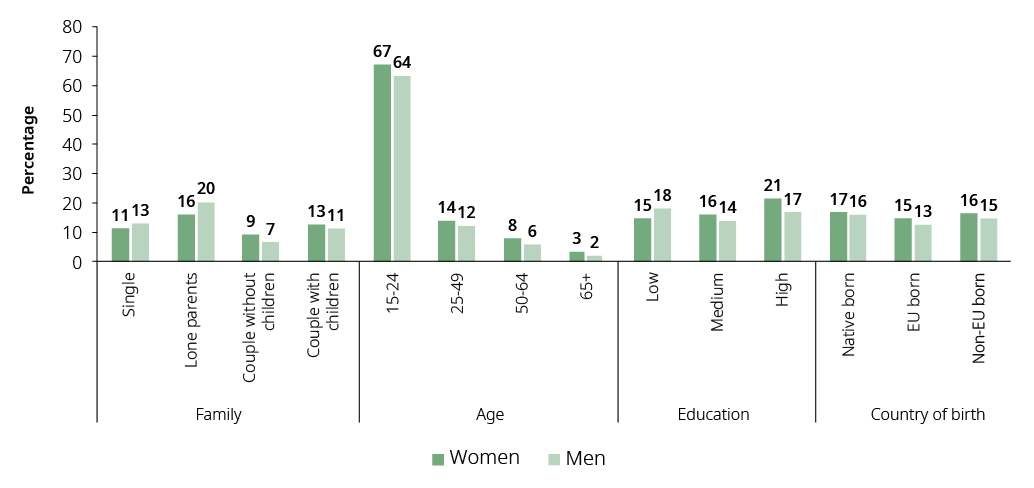Adult learning stalls most when reskilling needs are greatest

Up-to-date skills and knowledge are crucially important in the rapidly evolving labour market. Regardless of the level of education attained, participation in subsequent formal and non-formal learning activities ensures women and men keep pace with ever-changing labour-market needs. Nevertheless, the proportion of women and men (aged 15+) in formal or non-formal education and training remained low in the EU (17 %) in 2017, and has barely altered from 2005[1].
However, there were large differences between Member States. Sweden and Denmark, for example, had the highest participation rates (35 % and 33 % respectively), while Bulgaria and Romania had the lowest rates (both 9 %). Differences in adult learning between women and men generally remained very small across the EU, with a gap of less than 1 p.p. in 17 EU Member States. Sweden, Denmark and France (respective gaps of 12 p.p., 7.8 p.p. and 4.9 p.p. in favour of women) were the only clear exceptions.
The intersectional analysis revealed large differences in formal and non-formal learning related to age. Figure 20 illustrates that as people age, their participation in education and training drops. Unsurprisingly, women and men aged 15-24 in 2017 had the highest rates of adult learning (67 % and 64 % respectively) as most were still enrolled in formal education. However, among the 25-49 year age cohort figures for adult participation in formal or informal education had dropped significantly, to 14 % of women and 12 % for men. By the time people were approaching or in retirement, participation rates for both women and men had fallen into single digits.
Figure 20: Participation in formal or non-formal education and training of women and men, by family type, age, level of education, and country of birth (15+, %), and gender gaps, EU, 2017
A number of factors affect women’s and men’s participation in formal and informal education. The lack of time due to work or family-related duties are the strongest barriers to adult learning. While work schedules play a more significant role in preventing men from participation, the opposite is true for women, for whom family reasons represent higher barrier levels (see Section 9.7 on lifelong learning). These increase significantly when children under 5 years of age are brought into the mix (EIGE, 2017d).
